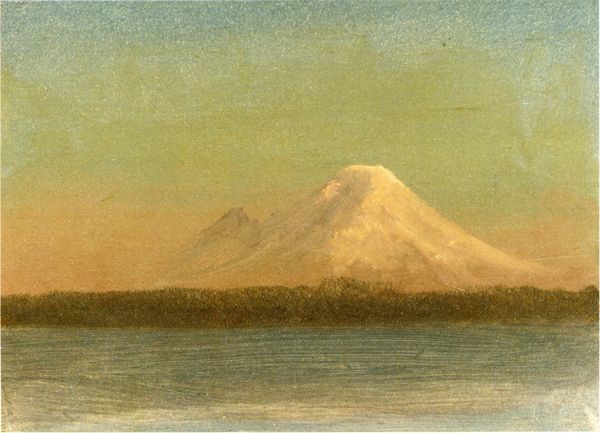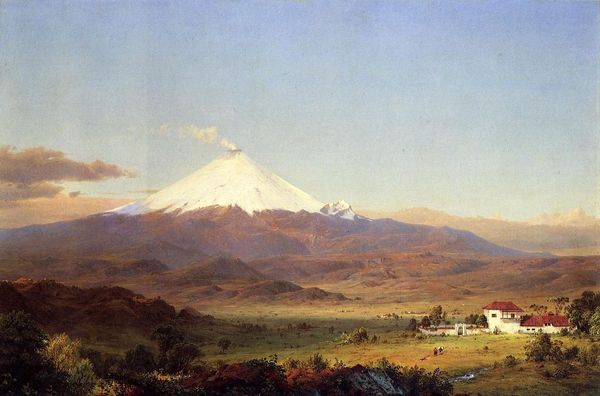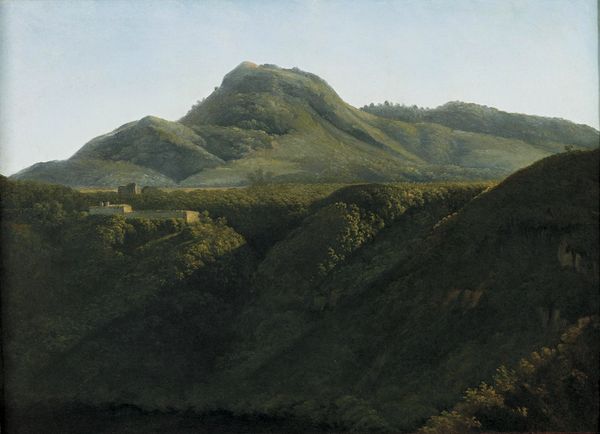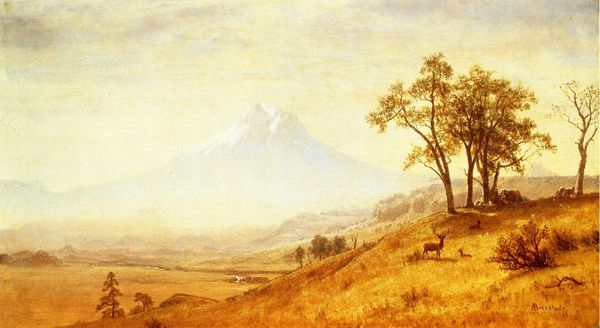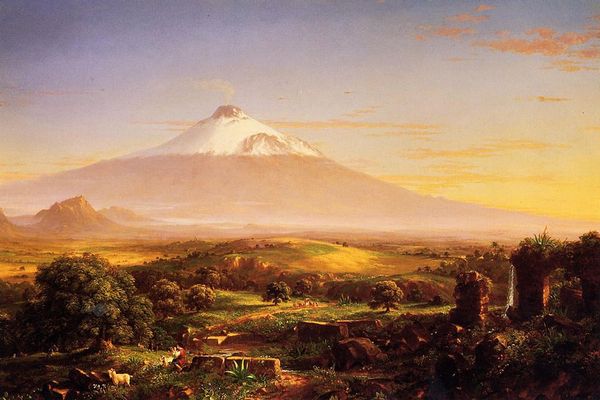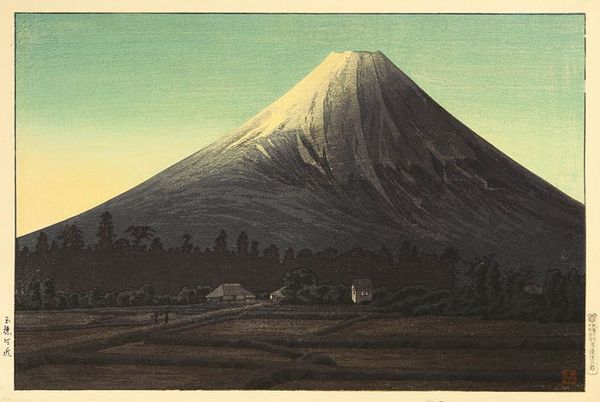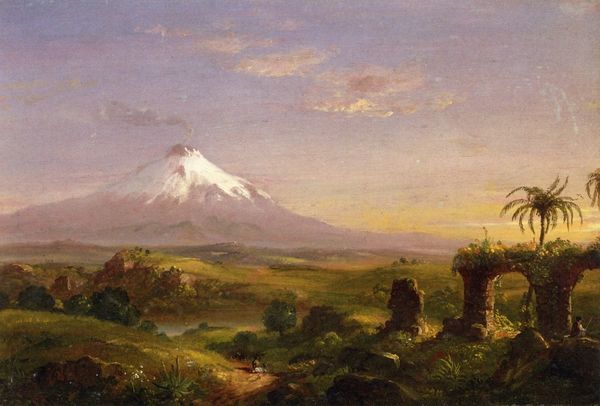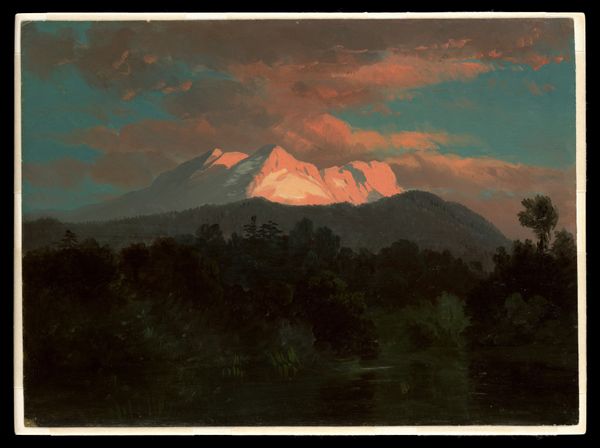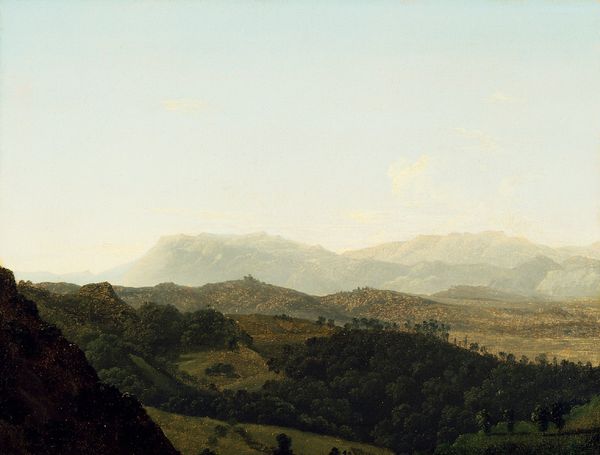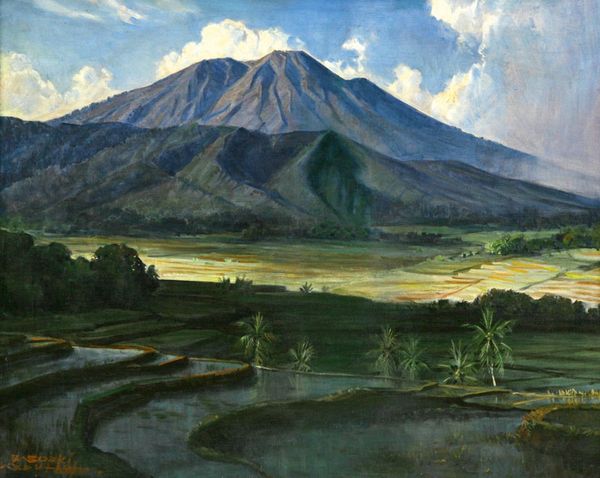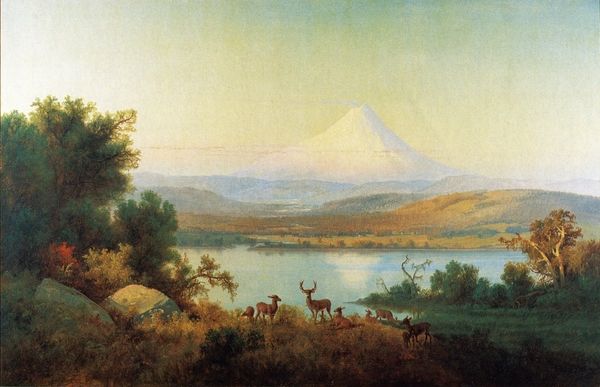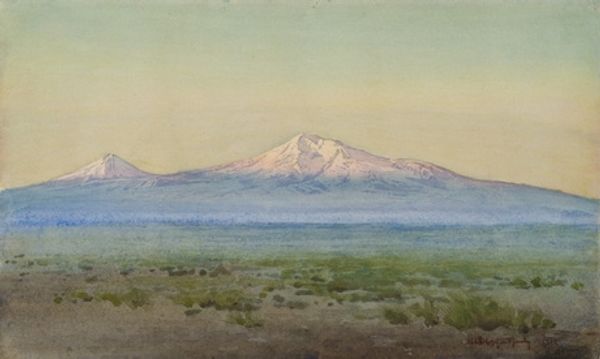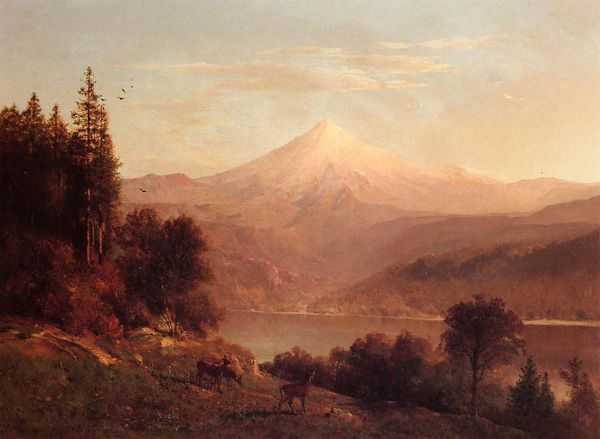
painting, plein-air, oil-paint
#
painting
#
plein-air
#
oil-paint
#
landscape
#
romanticism
#
realism
Copyright: Public domain
Curator: Painted en plein air in 1808, Caspar David Friedrich’s "Bohemian Landscape", which we have here, gives us insight into early Romantic landscape painting. Editor: Yes, my first impression is one of serenity. There's such an effective use of layered perspective; the hazy, soft colors pull the eye smoothly from foreground to those distant mountains. Curator: Friedrich’s landscapes reflect the social and political climate of his time, after the collapse of the Holy Roman Empire. The shift was toward a growing nationalistic sentiment across German-speaking territories, and the focus on nature underscored ideas of national identity. Editor: I can see that; nature is absolutely idealized. The composition is brilliantly balanced. The dark forest grounds the image, leading to those lighter hills and mountains that recede almost ethereally into the pale sky. It creates a visual harmony, doesn't it? Curator: It does. Remember Friedrich positioned landscape painting as an overtly political project within artistic circles of Dresden and beyond. Landscapes came to symbolize the spiritual and moral character of a people. The paintings were viewed, shown, and understood through this lens of patriotism and cultural renewal. Editor: And speaking of light, note how he uses the soft gradation of color to model the forms; the mountain range in the distance really appears to fade in and out of the atmosphere, almost as if painted through a mist, giving the range mass and scale without heavy lines. It's almost an optical illusion. Curator: Right. He carefully studies and represents natural light as symbolic, linking it directly with a period of transition and cultural transformation across territories during the early nineteenth century. The painting offers the chance to contemplate the intersection between art and nation-building, if you will. Editor: Precisely! By deconstructing Friedrich’s meticulous application of form and color, we discover an elevated landscape infused with depth, harmony, and an inherent calm. Curator: True. And by thinking of Friedrich as engaging in political representation through landscape, we come to a broader sense of what landscape meant to both art and public life in his era.
Comments
No comments
Be the first to comment and join the conversation on the ultimate creative platform.

